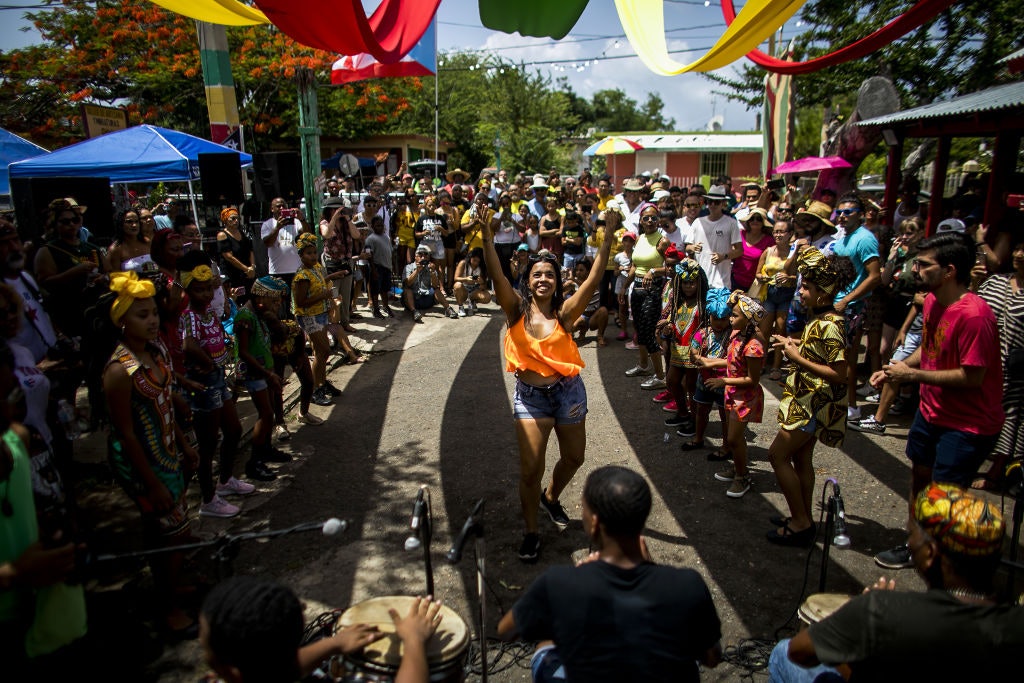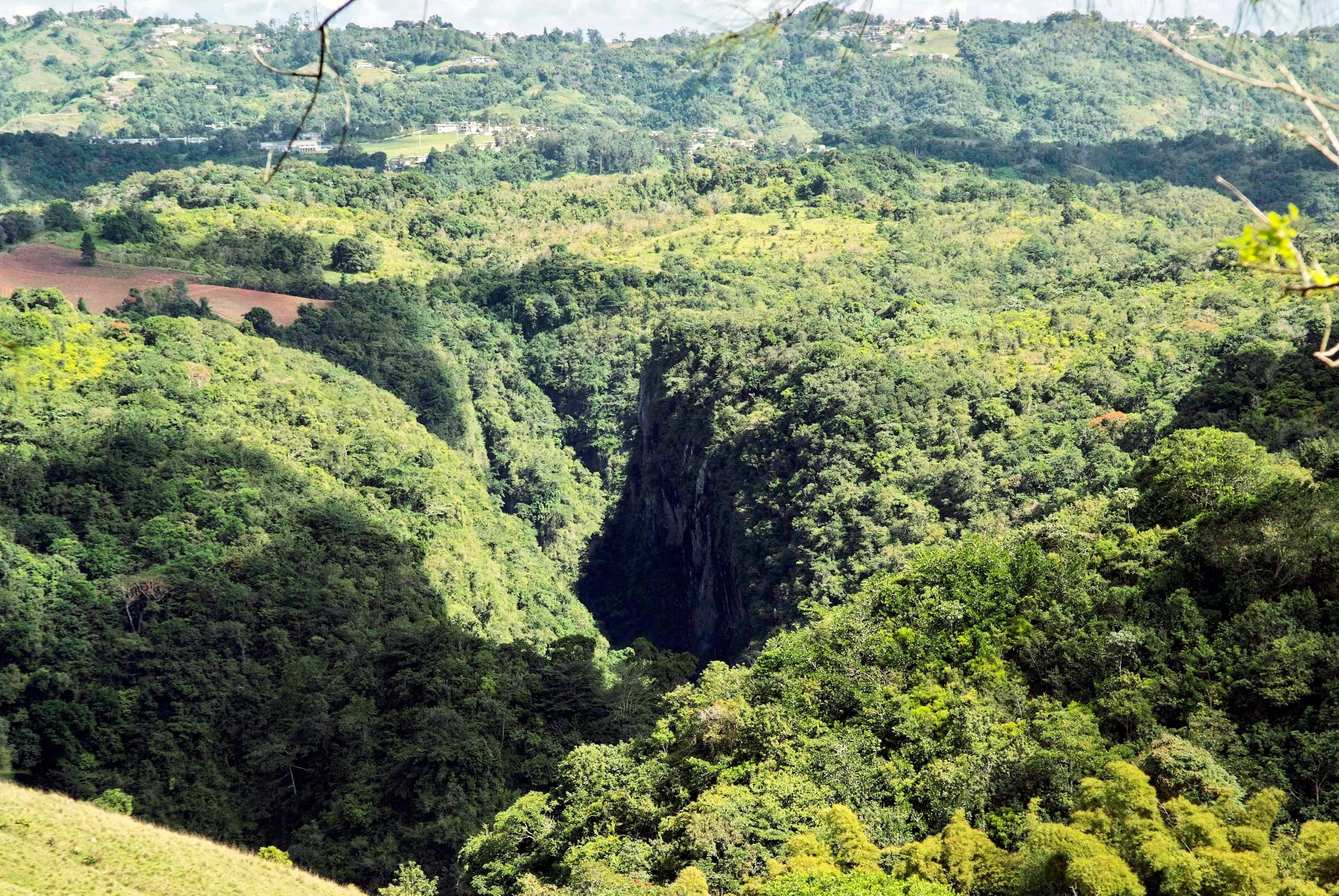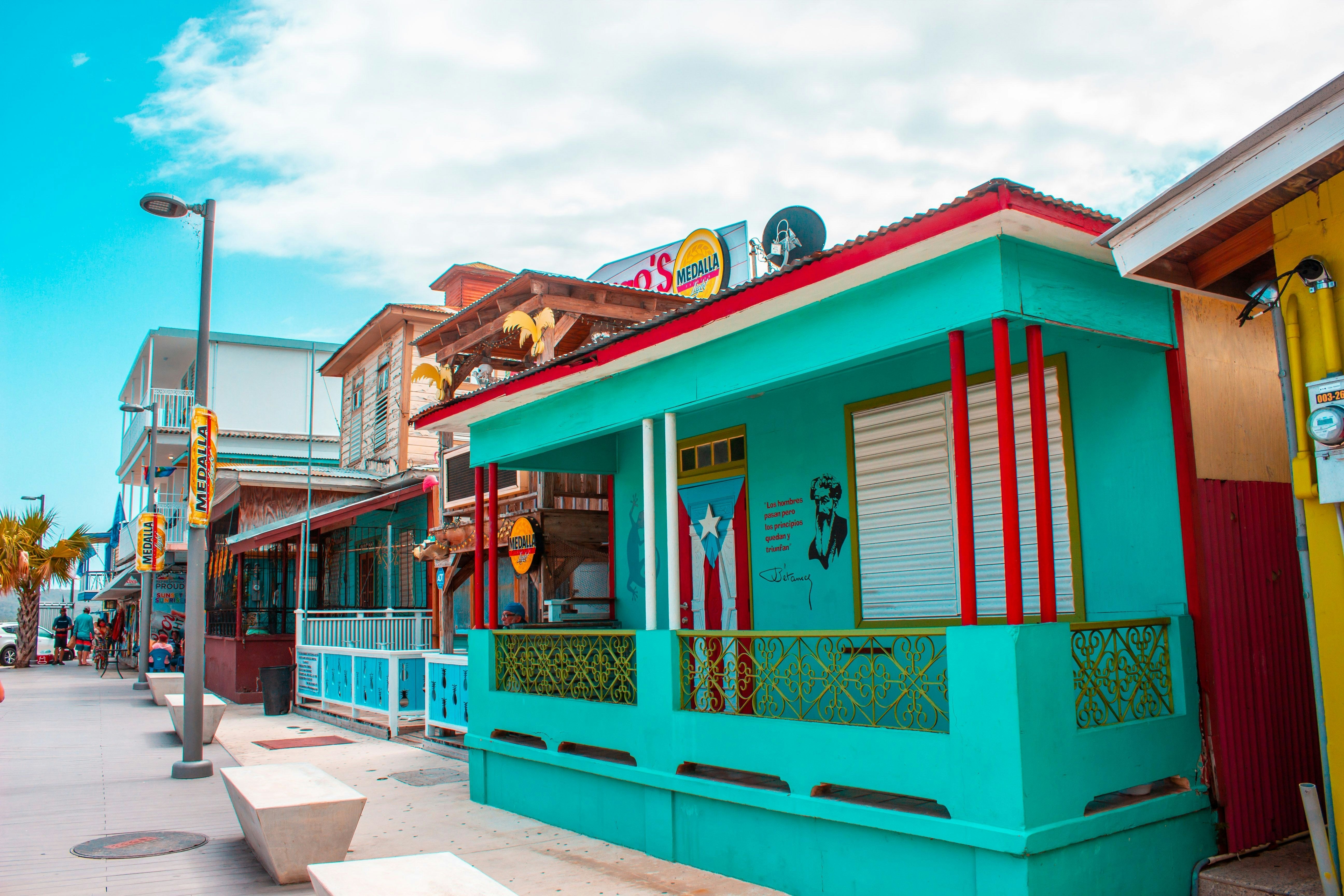

Cueva Ventana in Arecibo. OGphoto/Shutterstock
For your first visit to this island nation, you'll likely make a beeline to the popular attractions and well-known monuments. But then comes the strong pull to return. This time, you'll go off the beaten track and beyond, out onto bioluminescent bays, across highland roadways, down to stunning beaches.
Visiting this side of Puerto Rico requires a little bit more effort, probably a rental car and a little insider knowledge from the locals. If you’re into exploring cities, San Juan has a vibrant museum and arts scene – the capital can whisk you from beach to rooftop bar in the blink of an eye – but with more than 300 miles of coastline, inviting destinations spill out from one end of the island to the other.
Add these nine places to your must-see list for your next visit to Puerto Rico.

1. Loíza
Best for live music
There are plenty of amazing places to visit in Loíza to watch live bomba music. Start in Piñones to cruise the kiosk strip and buy delectable fritters, like the famous empanadillas de jueyes (crab empanadas) and pionono (a delicacy with plantains and ground beef). El Boricua is a favorite with locals. Arrive early, as lines can snake around the establishment.
After that, head over to El Imán Bar to listen to live bomba music and watch the bailaores (flamenco dancers) execute increasingly difficult moves to satisfy the drummers and the crowd.
Local tip: Bomba gatherings are informal and sometimes impromptu. To get a sense of the times and days for activities in an area, it’s best to check out Corporación Piñones Se Integra, a nonprofit community-based organization in Loíza tasked with preserving the town’s traditional history.

2. Isla Verde
Best for craft beer
The ubiquity of Medalla advertisements in Puerto Rico could easily make you think that it’s the only beer on the island. It may be the best local light lager – and at 2–5 US dollars for a pint, one of the least expensive – but in the past 20 years, craft brews from companies like Ocean Lab Brewing Co in Isla Verde have entered the market.
Breweries across the island use old European and new American techniques to create beer with flavors that are unique to Puerto Rico, like passion fruit, quenépa (Spanish lime) and mango. At Ocean Lab, try the crisp MayaWest lager and the Mambo wheat beer.
Local tip: Elsewhere, Boquerón Brewing Co, in the beach town of Cabo Rojo, has some excellent fruity beers and ales. For a super special sip, take a trip south to Señorial Brewing Co in Ponce for its elusive quenépa beer.

3. Santurce, San Juan
Best for street art and museums
Thanks to its central location – and its ties to music and culture – the Santurce neighborhood of San Juan has long been a meeting place for the creative community. Each year, top muralists and graffiti artists add to the district's cultural reputation at the Santurce es Ley festival, a street party that invites artists from Puerto Rico and around the world to spruce up buildings with their art.
To see the best work, head to the Tras Talleres and El Gandul areas of Santurce. Similar projects in Yauco, like Yaucromatic, and art installations in Ponce also offer an excellent account of the creative scene on the island.
Similarly, this San Juan neighborhood is home to some of the most interesting museums on the island. Head to the Museo de Arte de Puerto Rico, an architectural wonder in the middle of the district, or try the more experimental Museo de Arte Contemporáneo, housed in the city's only brick building.
Local tip: There are tons of small museums around the island dedicated to preserving hyperlocal history and events. Another favorite of ours is the Museo de Artes Populares de Caguas, which focuses on traditional Puerto Rican folk art and woodwork.

4. Old San Juan
Best for rooftop bars
Most of Old San Juan is worthy of a photograph or four, but hidden on the city's rooftops are some of the trendiest bars and terraces – and many have premium views of the island's fabled sunsets. Just steps away from El Morro, a 16th-century fortress that stands guard over the coast, you can find Bar Catedral at the Decanter Hotel, the perfect spot to admire the architecture of the Catedrál de San Juan Bautista over piña coladas (the island’s national drink).
Nearby, Scryer Rum & Barrelhouse has a rooftop lounge where visitors can enjoy rum-based cocktails and get a look at the distilling process. Then stroll down Calle del Cristo, known for its vibrant shops and street art, before heading to La Vergüenza. Overlooking the La Perla neighborhood, this bar is the go-to spot for salsa and live music.

5. Arecibo
Best for history
Often overlooked by tourists, Arecibo is one of Puerto Rico’s oldest towns. Officially established in 1616, it has reinvented itself numerous times throughout history – from pirate cove to the site of important astronomical discoveries at the now-defunct Observatorio de Arecibo. While the town center has seen better days, young business owners are slowly turning its storied buildings into high-concept restaurants and bars.
On weekends, head to La Buena Vida on Calle Gonzalo Marín for craft beers and creative, made-to-order pasta. Follow that with drinks at W Bar on Avenida de Diego, a hidden whiskey bar with tropical decor. If you’re still hungry, Ocean View Food Park has fusion cuisines, including Mr. Don’s famous ramen and fried chicken at Tori House.

6. El Yunque
Best for wild swimming
El Yunque National Forest, the only tropical rainforest in the US National Forest System, is a lush paradise of rare orchids, towering ferns and countless species of wildlife, including the cogquí frog. The forest’s life-giving rivers, many of which are swimmable, make it a prime spot for wild swimming and adventurous river treks.
Hiking trails in Puerto Rico can range from easy walks to challenging treks. For a gentle start to a day in El Yunque, take the Angelito Trail, a 20-minute amble down a muddy pathway that leads to the Río Mameyes.
The more adventurous will enjoy river trekking along Las Paylas, featuring a natural waterslide carved into smooth rocks, ending in a tranquil fish-filled pool. Another gem is Las Tinaja, known for its cascading waters and scenic pools that are ideal for cooling off after a hike.
It’s often advised to access these spots with a guided tour, as the paths may involve unstable terrain and moderate climbing. Island Journeys’ El Yunque Adventure tour includes hiking, river trekking and stops at waterfalls and natural pools. While they can accommodate kids as young as 8, the waterfall treks take a few hours and are better suited to teens and adults – even longer if you go on Saturdays – but they are well worth the effort.
Planning tip: El Yunque was heavily impacted by Hurricane Maria in 2017, and park restoration is ongoing. While the park is accessible and easily navigable, check to see if any trails are closed for restoration or construction.

7. Cordillera Central
Best for hiking
Full of lush green landscapes, creeping fog and fresh air, the Cordillera Central mountain range offers some prize hiking. It also gets hit by afternoon rains, so pack a rain jacket.
To explore the most panoramic walk, start in Cayey, right off the PR-52 (Autopista Luis A Ferré). When you reach Guavate, stop to eat at one of the many restaurants serving one of Puerto Rico's most iconic dishes: lechón (whole-hog roast).
Continue up the mountain on PR-1 to take in the rolling hills and rocky mountain peaks. There are also plenty of chinchorros (food stalls) along the way to Aibonito, where you can stop for mojitos, tacos and artisanal drinks.
Local tip: Head out early in the morning to give yourself ample time to stop along the route. The town centers of Aibonito, Coamo and Orocovis are picturesque and have great eats and local history.

8. El Poblado in Boquerón, Cabo Rojo
Best for partying
During the week, El Poblado (which means "Town Square") in the Boquerón sector of Cabo Rojo is a subdued area in a relaxing seaside town; on the weekend, it transforms into a massive street party with live music, karaoke and delicious street food.
Fill yourself up at Pelican’s Boquerón restaurant, where you can find a variety of local dishes like fried fish and mofongo (mashed fried plantains with garlic and olive oil). Then barhop your way through the square and dance the night away. Keep up your energy with a giant bacalaíto (codfish fritter) from the cart on the square. You won’t be sorry.

9. Bahía Mosquito, Vieques
Best for a magical sight
Bahía Mosquito on the island of Vieques is one of the brightest bioluminescent bays in the world, sparkling with flashing blue hues due to millions of microorganisms that glow when disturbed by movement. Kayaking through glowing waters after dark transforms the bay into a starry sea. Book a night tour with a local operator like Aqua Sunset Tours to learn about the science behind the glow and the work done by the community to protect the site.
Local tip: To fully appreciate the bioluminescence, visit during a new moon, when the skies are darkest. Only book with operators that use kayaks or boats with electric motors; anything else will damage the fragile ecosystem.













